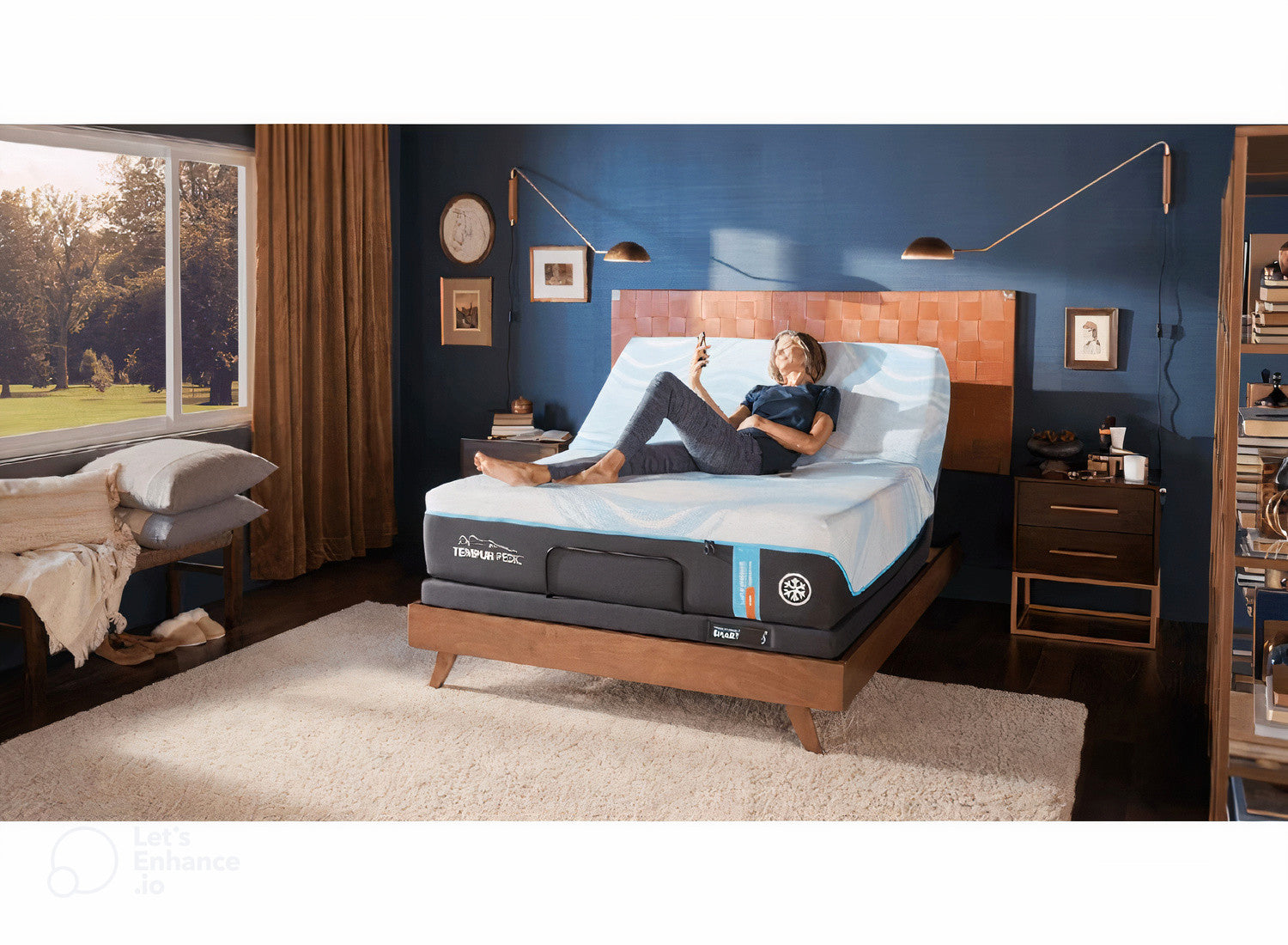
How To Choose A Mattress (Part 1)
Picking out your perfect mattress is one of the most important decisions you can make for your home — after all, it's the key to a good night's sleep — but the amount of options when you shop can make it seem like an impossible task. Between navigating the wide range of materials and marketing lingo, sorting through all of the sizes and specs and figuring out how much you should spend, it can be downright exhausting.
What to consider when choosing a mattress
First and foremost, your spine stays aligned when you lie down. Your sleep position, body type and personal preferences for the feel and materials will all play a role in determining which mattress is best suited for your needs. You also want to consider cost, convenience, durability and any sleep issues — i.e., whether you're a hot sleeper, have back pain or get woken up by your sleeping partner.
Types of Mattresses
Memory foam and innerspring beds are the most popular types, but additional constructions are becoming more common to give shoppers a variety. Within each mattress type, you can still find a wide range of firmness levels and price points. Here's how to select your mattress type:
Memory foam
Memory foam mattresses offer the best pressure relief because they conform to your body and take weight off pressure points. Users describe lying on foam beds as feeling like they're being cradled. These mattresses are especially ideal for side sleepers or anyone with back pain because they help promote proper spine alignment by putting less stress on your shoulders and hips. They also help with motion isolation, so you're less likely to feel your sleeping partner move.
There are often multiple layers with firmer foam on the bottom for durability and support and softer foam on top for comfort. A downside to memory foam is that it can trap in heat more easily, though many brands now offer built-in cooling features to prevent overheating.
Latex
Latex mattresses feel somewhat similar to memory foam, but it's more resilient (i.e. bouncy) and feels firmer with less sinking in. Natural latex is made from rubber trees and may be used in organic mattresses, making it an ideal choice for eco-conscious shoppers. It tends to be more expensive than memory foam.
There are two prominent types of latex you'll notice as you shop: Dunlop, which is often denser, and Talalay, which may feel softer. Though in reality, you may not even be able to feel the difference between these two.
Innerspring
These beds are made of steel coils, making them firmer and providing more bounce. Innerspring mattresses feel familiar to many shoppers, especially compared to the boxed mattresses that have become popular in recent years. They're more suitable for back and stomach sleepers, who benefit from a firmer surface to keep the spine aligned.
Consider both coil gauge and coil count when you shop. Coil gauge tells you how thick the steel is; it typically ranges from 12-15 and a lower number means it's firmer and more durable. Coil count tells you the number of coils in the mattress; a quality model will have at least 400 coils in a Queen size. You can also consider pocketed coils, which means each spring is individually wrapped (instead of webbed together) for targeted support.
Hybrid
Hybrid mattresses use a combination of memory foam or latex and coils so you don't have to pick just one. These have become more popular in recent years, especially for online mattress brands. Typically, coils sit on the bottom for support, while foam sits on top for pressure relief. Many hybrids on the market — especially from bed-in-a-box brands — feel very similar to foam beds when you lie down. Just note that they're going to be more expensive and heavier to set up than their all-foam alternatives.
Adjustable
While these are less common, adjustable mattresses have air chambers that allow you to control the mattresses firmness level. They're especially useful for couples that have different preferences. They're expensive, though users consistently tell us their purchase was well worth the splurge thanks to the quality sleep they achieve.
Mattress Firmness Levels
Mattresses are most commonly described as soft, medium, medium-firm or firm. Medium to medium-firm beds are the most popular because they suit a wide range of needs. When picking out your firmness level, it's important to take into account both your sleep position and body type:
Sleep Position
- Side sleepers: This is the most commonly preferred position and the one that doctors typically recommend to avoid back pain. The best mattresses for side sleepers have soft to medium firmness levels because they help keep your spine aligned. If it's too firm, you may end up putting too much pressure on your hips and shoulders.
- Stomach sleepers: A firmer mattress is more suitable for anyone who likes to sleep on their stomach: You don't want your pressure points to sink in too far in this position.
- Back sleepers: Medium firmness is ideal in this case. If your mattress is too soft or too firm in this position, you risk not having proper alignment.
- Combination sleepers: Also opt for medium firmness to best support your various positions if you move around at night.
Body Type
- Heavier body weights: A firmer mattress is best for heavier bodies because more weight means more pressure on the bed. Too much pressure can cause the bed to sink in and jeopardize spine alignment, leading to back pain. Some top-performing mattress brands also make models designed specifically for people over 250 pounds.
- Lightweight sleepers: Smaller frames are better suited with a softer mattress because they aren't putting as much pressure on the bed. If the bed is too firm, it won't sink in enough to relieve pressure on the joints.
Factor in both your sleep position and weight when deciding on your best firmness level. For instance, if you're a lightweight stomach sleeper, you can choose a medium firmness to compromise between soft and firm.
One more thing regarding firmness: Brands sometimes describe their mattresses on a scale of 1 to 10, with 1 being the softest and 10 being the firmest. These ratings can help you compare firmness levels when you shop, but don't get too hung up on the specific number.
Please refer to some of our mattresses below:
https://lifestylefurniturehomestore.com/collections/mattresses


